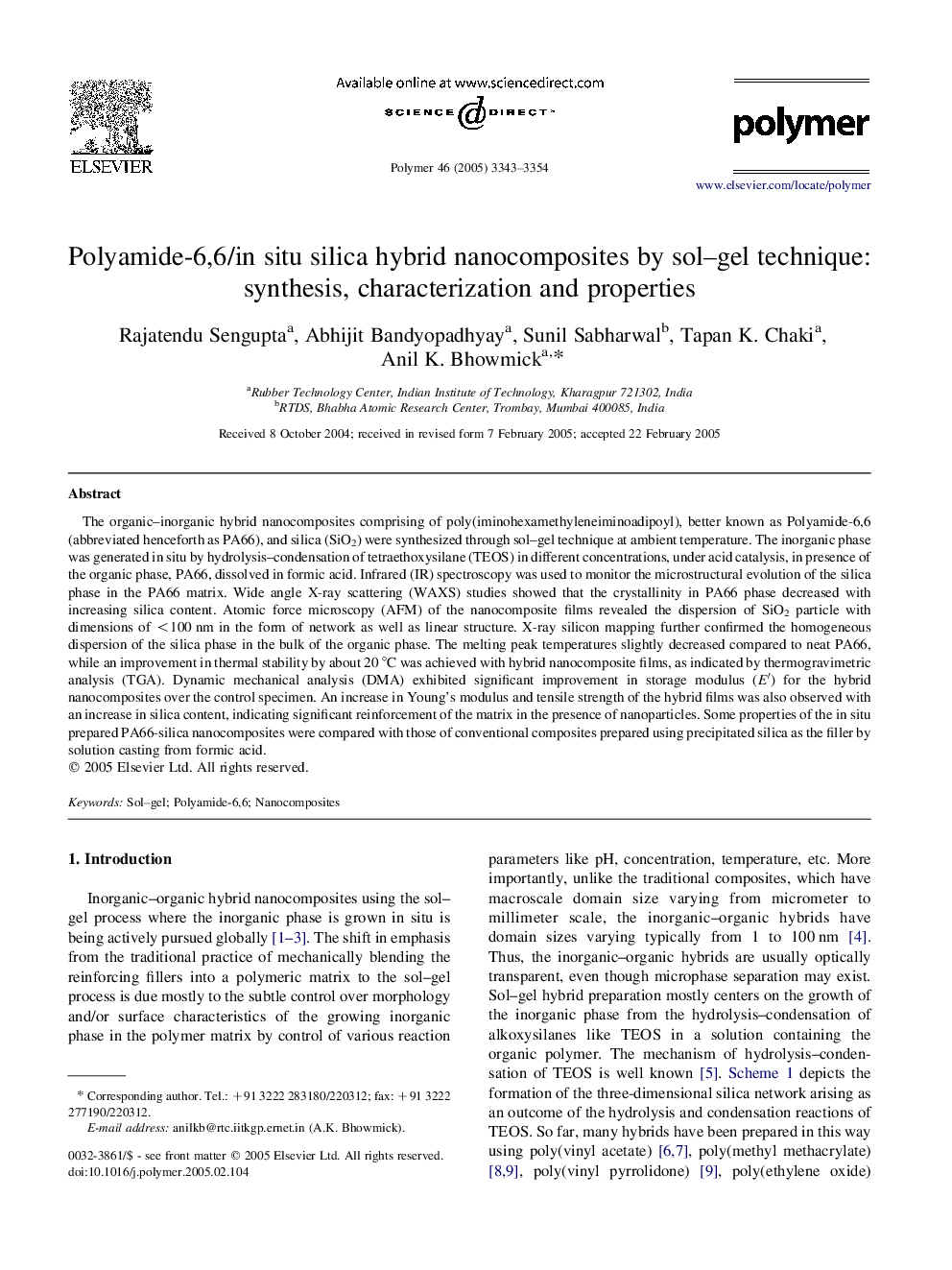| Article ID | Journal | Published Year | Pages | File Type |
|---|---|---|---|---|
| 5187938 | Polymer | 2005 | 12 Pages |
The organic-inorganic hybrid nanocomposites comprising of poly(iminohexamethyleneiminoadipoyl), better known as Polyamide-6,6 (abbreviated henceforth as PA66), and silica (SiO2) were synthesized through sol-gel technique at ambient temperature. The inorganic phase was generated in situ by hydrolysis-condensation of tetraethoxysilane (TEOS) in different concentrations, under acid catalysis, in presence of the organic phase, PA66, dissolved in formic acid. Infrared (IR) spectroscopy was used to monitor the microstructural evolution of the silica phase in the PA66 matrix. Wide angle X-ray scattering (WAXS) studies showed that the crystallinity in PA66 phase decreased with increasing silica content. Atomic force microscopy (AFM) of the nanocomposite films revealed the dispersion of SiO2 particle with dimensions of <100 nm in the form of network as well as linear structure. X-ray silicon mapping further confirmed the homogeneous dispersion of the silica phase in the bulk of the organic phase. The melting peak temperatures slightly decreased compared to neat PA66, while an improvement in thermal stability by about 20 °C was achieved with hybrid nanocomposite films, as indicated by thermogravimetric analysis (TGA). Dynamic mechanical analysis (DMA) exhibited significant improvement in storage modulus (Eâ²) for the hybrid nanocomposites over the control specimen. An increase in Young's modulus and tensile strength of the hybrid films was also observed with an increase in silica content, indicating significant reinforcement of the matrix in the presence of nanoparticles. Some properties of the in situ prepared PA66-silica nanocomposites were compared with those of conventional composites prepared using precipitated silica as the filler by solution casting from formic acid.
